Understanding What Is Power Transformer and Its Role in Electrical Systems?
Have you ever wondered how electricity travels safely from power plants to your home? The answer lies in a device you rarely see but heavily rely on: the power transformer.
A power transformer is a crucial electrical device that changes voltage levels in power systems. It enables efficient long-distance transmission of electricity and safe distribution to end-users. Power transformers are essential for maintaining a stable and reliable electrical grid.
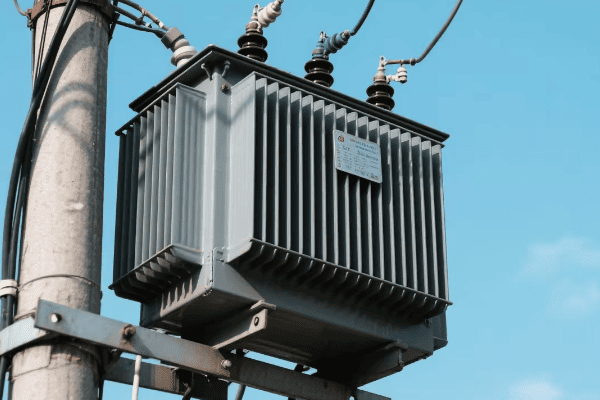
As an electrical engineer with years of experience in the power industry, I’ve seen firsthand how vital these devices are. Let’s explore the world of power transformers and discover why they’re the unsung heroes of our electrical systems.
The Fundamentals: Defining Power Transformers and Their Core Functions?
Have you ever tried to pour water from a fire hose into a drinking glass? That’s similar to the challenge of getting electricity from power plants to your home. Power transformers are the solution to this problem.
Power transformers are electrical devices that transfer energy between two or more circuits through electromagnetic induction. Their core functions include changing voltage levels, isolating circuits, and regulating power flow. These functions are crucial for efficient and safe electricity distribution.
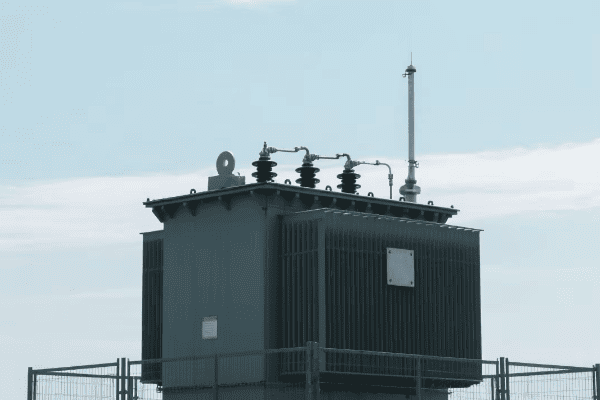
Let’s dive deeper into the fundamentals of power transformers:
Basic Components
A power transformer has several key parts:
-
Core:
- Made of thin layers of magnetic material, usually silicon steel.
- Provides a path for the magnetic field.
-
Windings:
- Primary winding receives electrical energy.
- Secondary winding delivers transformed energy.
- Made of copper or aluminum wire.
-
Insulation:
- Prevents short circuits between windings and core.
- Often uses oil or special gases.
Principle of Operation
Power transformers work on a simple yet powerful principle:
-
Electromagnetic Induction:
- When alternating current flows through the primary winding, it creates a changing magnetic field.
- This field induces a voltage in the secondary winding.
-
Voltage Transformation:
- The ratio of turns in the primary and secondary windings determines the voltage change.
- More turns in the secondary increase voltage; fewer turns decrease it.
Here’s a simple table showing how turn ratios affect voltage:
| Primary Turns | Secondary Turns | Input Voltage | Output Voltage | Type |
|---|---|---|---|---|
| 100 | 1000 | 1000 V | 10,000 V | Step-up |
| 1000 | 100 | 10,000 V | 1000 V | Step-down |
| 100 | 100 | 1000 V | 1000 V | Isolation |
I remember the first time I explained these principles to a group of engineering students. To demonstrate, we built a simple transformer using two coils of wire and an iron rod. When we connected one coil to a battery through a switch, the students were amazed to see the light bulb connected to the other coil flicker as we opened and closed the switch. It was a powerful demonstration of how energy can be transferred between circuits without a direct electrical connection.
Understanding these fundamentals is crucial for anyone working with electrical systems. They explain why transformers are so effective at changing voltage levels and why they’re so important in our power grid. From the massive transformers at power plants to the tiny ones in your phone charger, they all work on these same basic principles. It’s a testament to the elegance and power of electromagnetic induction, a phenomenon that continues to shape our electrical world.
Power Transformer Mechanics: How These Devices Operate in Electrical Systems?
Have you ever wondered what happens inside a power transformer when you flip a switch? The process is both simple and fascinating, involving a dance of electrons and magnetic fields.
Power transformers operate through electromagnetic induction. When alternating current flows through the primary winding, it creates a changing magnetic field in the core. This field then induces a voltage in the secondary winding. The voltage change depends on the ratio of turns in the windings.

Let’s explore the mechanics of power transformers in more detail:
The Transformation Process
Here’s how a power transformer changes voltage:
-
Input Stage:
- Alternating current enters the primary winding.
- This creates a changing magnetic field in the core.
-
Magnetic Field:
- The changing magnetic field extends through the core.
- It reaches the secondary winding.
-
Output Stage:
- The changing field induces a voltage in the secondary winding.
- The induced voltage depends on the turn ratio of the windings.
Efficiency and Losses
Transformers are highly efficient, but some energy loss occurs:
-
Core Losses:
- Caused by the changing magnetic field in the core.
- Include hysteresis loss and eddy current loss.
-
Copper Losses:
- Result from resistance in the windings.
- Increase with the current flowing through the windings.
Cooling Systems
Transformers generate heat, so cooling is crucial:
-
Oil-Cooled:
- Uses mineral oil to absorb and dissipate heat.
- Common in large power transformers.
-
Air-Cooled:
- Uses air circulation for cooling.
- Often used in smaller transformers.
Here’s a comparison of different cooling methods:
| Cooling Method | Advantages | Disadvantages | Typical Applications |
|---|---|---|---|
| Oil-Cooled | Efficient cooling, Higher overload capacity | Requires maintenance, Fire risk | Large power transformers |
| Air-Cooled | Simple, Low maintenance | Limited cooling capacity | Small to medium transformers |
| Water-Cooled | Very efficient cooling | Complex, Expensive | Very large or special applications |
I once visited a large substation where they were installing a new oil-cooled transformer. The size of the cooling radiators was impressive – almost as big as the transformer itself! The engineer explained how the oil circulates through these radiators, efficiently carrying heat away from the core and windings. It was a vivid reminder of how much thought and engineering goes into keeping these vital devices running smoothly.
Understanding the mechanics of power transformers is crucial for anyone working in the electrical industry. These devices may seem simple at first glance, but their operation involves a complex interplay of electromagnetic principles. From the basic process of voltage transformation to the intricacies of cooling systems, every aspect of a transformer’s design is carefully engineered to ensure efficient and reliable operation.
As we continue to rely more heavily on electricity in our daily lives, the role of power transformers becomes increasingly important. They’re not just passive components in our electrical systems; they’re active, vital links that make our modern electrical grid possible. Whether you’re a seasoned electrical engineer or just someone curious about how electricity gets to your home, appreciating the mechanics of power transformers gives you a deeper understanding of the complex systems that power our world.
Diversity in Design: Exploring Various Types of Power Transformers and Their Applications?
Did you know that not all power transformers are created equal? Just as there are different types of cars for different purposes, there are various types of transformers designed for specific applications in our electrical systems.
Power transformers come in various types, each designed for specific applications. These include step-up and step-down transformers, autotransformers, isolation transformers, and instrument transformers. Each type has unique features that make it suitable for particular roles in power generation, transmission, and distribution systems.
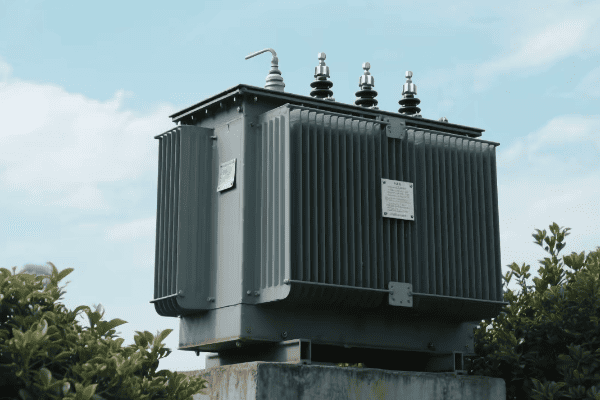
Let’s explore the diversity in power transformer design:
Step-Up and Step-Down Transformers
These are the workhorses of our power grid:
-
Step-Up Transformers:
- Used at power plants to increase voltage for long-distance transmission.
- Reduce current and power losses in transmission lines.
-
Step-Down Transformers:
- Used in substations to decrease voltage for local distribution.
- Make electricity safe for use in homes and businesses.
Autotransformers
A unique design with specific advantages:
-
Single Winding:
- Uses a single winding for both primary and secondary.
- More efficient and compact than two-winding transformers.
-
Applications:
- Often used in power systems for voltage regulation.
- Common in motor starting circuits.
Isolation Transformers
Focused on safety and noise reduction:
-
Galvanic Isolation:
- Separates primary and secondary circuits electrically.
- Protects against electric shock and reduces noise.
-
Applications:
- Used in sensitive electronic equipment.
- Common in medical devices and audio equipment.
Instrument Transformers
Specialized for measurement and protection:
-
Current Transformers (CTs):
- Measure high currents safely.
- Used in metering and protective relays.
-
Voltage Transformers (VTs):
- Measure high voltages safely.
- Also used in metering and protection systems.
Here’s a comparison table of different transformer types:
| Type | Primary Function | Typical Applications | Key Features |
|---|---|---|---|
| Step-Up | Increase voltage | Power plants | Large size, high capacity |
| Step-Down | Decrease voltage | Substations, local distribution | Various sizes, widespread use |
| Autotransformer | Efficient voltage change | Voltage regulation, motor starting | Compact, cost-effective |
| Isolation | Provide electrical isolation | Sensitive electronics, medical equipment | Safety, noise reduction |
| Instrument (CT/VT) | Measurement and protection | Metering, protective relays | High accuracy, safety |
I remember working on a project where we needed to integrate a new solar farm into the existing power grid. We used a combination of step-up transformers at the solar farm to increase the voltage for transmission, and then step-down transformers at the substation to bring the voltage back down for distribution. But what really fascinated me was the use of autotransformers for fine-tuning the voltage levels as the solar output fluctuated throughout the day. It was a perfect example of how different transformer types work together in a modern, dynamic power system.
The diversity in power transformer design reflects the complexity and varied needs of our electrical systems. Each type of transformer plays a crucial role, whether it’s stepping up voltage for efficient transmission, providing isolation for sensitive equipment, or enabling accurate measurements for system monitoring and protection.
As our power systems continue to evolve, with increasing integration of renewable energy sources and smart grid technologies, the importance of understanding and selecting the right type of transformer for each application becomes even more critical. Whether you’re designing a new power system, upgrading an existing one, or simply curious about how our electrical infrastructure works, appreciating the diversity in transformer design gives you valuable insight into the backbone of our modern electrical world.
The Backbone of Power Distribution: Why Transformers Are Essential for Efficient Energy Transfer?
Have you ever wondered why we don’t just send electricity straight from power plants to our homes? The answer lies in the crucial role that transformers play in making our power distribution system efficient and practical.
Transformers are essential for efficient energy transfer because they allow electricity to be transmitted at high voltages over long distances, significantly reducing power losses. They then step down the voltage for safe use in homes and businesses. This system of voltage transformation is the backbone of our entire power distribution network.
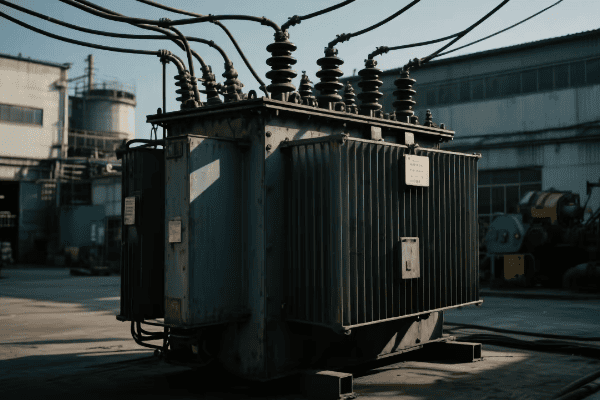
Let’s delve into why transformers are so crucial for efficient energy transfer:
Reducing Transmission Losses
Transformers make long-distance power transmission feasible:
-
High Voltage Transmission:
- Step-up transformers at power plants increase voltage for transmission.
- Higher voltage means lower current for the same power.
- Lower current results in less power loss in transmission lines.
-
Efficiency Calculation:
- Power loss in lines is proportional to the square of the current.
- Doubling voltage reduces current by half, cutting losses to one-quarter.
Voltage Adaptation for End-Use
Transformers make electricity safe and usable:
-
Step-Down Process:
- Substations use transformers to reduce voltage for local distribution.
- Further step-down occurs for residential and commercial use.
-
Safety:
- Lower voltages are safer for end-users.
- Reduces risk of electrical accidents in homes and businesses.
Isolation and System Stability
Transformers contribute to grid stability:
-
Electrical Isolation:
- Transformers separate different parts of the power system.
- This isolation helps prevent faults from spreading.
-
Voltage Regulation:
- Some transformers have tap changers to adjust voltage.
- This helps maintain stable voltage levels despite load changes.
Here’s a table showing typical voltage levels in a power system:
| Stage | Typical Voltage | Transformer Role |
|---|---|---|
| Generation | 11 kV – 25 kV | Step-up for transmission |
| Transmission | 110 kV – 765 kV | Long-distance power transfer |
| Sub-transmission | 33 kV – 110 kV | Regional distribution |
| Distribution | 11 kV – 33 kV | Local area supply |
| End-User | 120 V – 480 V | Safe usage in buildings |
I once worked on a project to upgrade a city’s power distribution system. We were replacing old transformers with more efficient models. The impact was remarkable – we saw a significant reduction in overall system losses. But what really struck me was a conversation with a local resident. She noticed that her electricity bills had gone down and her appliances seemed to work better. It was a powerful reminder of how improvements in transformer technology directly affect people’s daily lives.
Transformers are truly the unsung heroes of our power distribution system. They enable the efficient transfer of energy across vast distances, making it possible for us to enjoy the benefits of electricity generated far from our homes. Without transformers, our modern electrical grid simply wouldn’t be possible.
The role of transformers goes beyond just changing voltage levels. They’re crucial for system protection, power quality management, and even integrating renewable energy sources into the grid. As we move towards smarter, more flexible power systems, the importance of transformers is only going to grow.
Understanding the essential role of transformers in power distribution gives us a deeper appreciation for the complex infrastructure that powers our modern world. It’s a testament to the ingenuity of electrical engineering that we can so efficiently and safely distribute power across entire countries, and transformers are at the heart of making this possible.
Evolution of Power: How Modern Transformers Are Adapting to Changing Energy Landscapes?
Have you ever wondered how our power systems keep up with the growing demand for clean, efficient energy? The answer lies in the continuous evolution of one of its most crucial components: the transformer.
Modern transformers are adapting to changing energy landscapes through technological innovations. These include the use of advanced materials, integration of smart monitoring systems, and development of more efficient designs. These advancements allow transformers to better support renewable energy integration, smart grids, and increasing power demands.
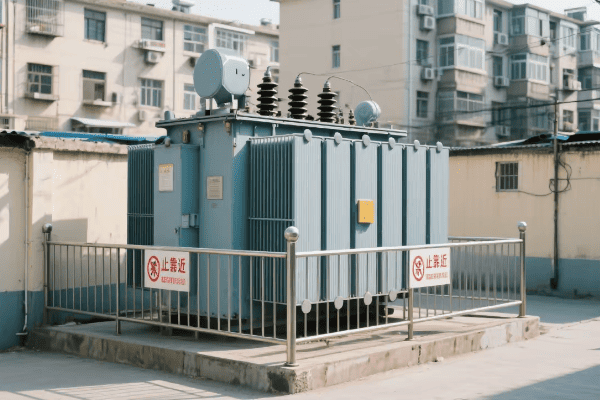
Let’s explore how transformers are evolving to meet future energy challenges:
Advanced Materials
New materials are pushing the boundaries of transformer performance:
-
Amorphous Metal Cores:
- Reduce no-load losses by up to 70% compared to traditional silicon steel.
- Improve overall transformer efficiency.
-
High-Temperature Superconducting (HTS) Transformers:
- Use superconducting materials for windings.
- Offer higher efficiency and smaller size, but still in development stage.
Smart Monitoring and Diagnostics
Transformers are becoming more intelligent:
-
Integrated Sensors:
- Monitor key parameters like temperature, oil condition, and load.
- Provide real-time data on transformer health and performance.
-
Predictive Maintenance:
- Use AI and big data analytics to predict potential issues.
- Helps prevent failures and optimize maintenance schedules.
Renewable Energy Integration
Transformers are adapting to support green energy:
-
Bi-Directional Power Flow:
- Handle power flowing both to and from the grid.
- Essential for integrating distributed renewable sources like rooftop solar.
-
Harmonic Mitigation:
- Address power quality issues associated with renewable energy inverters.
- Ensure stable and clean power supply in grids with high renewable penetration.
Here’s a comparison of traditional and modern transformer features:
| Feature | Traditional Transformer | Modern Smart Transformer | |
|---|---|---|---|
| Core Material | Silicon Steel | Amorphous Metal or HTS | |
| Monitoring | Basic gauges | Real-time digital monitoring | |
| Maintenance | Time-based | Condition-based predictive | |
| Renewable Integration | Limited capability | Advanced features for renewables | |
| Efficiency | 95-98% | 99%+ | |
| Size | Size/Weight | Larger and heavier | More compact and lightweight |
| Data Analytics | None | Advanced AI-driven analytics |
I recently had the opportunity to work on a pilot project testing smart transformers for a microgrid application. The flexibility these devices offered was impressive. We could seamlessly integrate solar panels, battery storage, and even electric vehicle charging stations. The transformer could handle bidirectional power flow, convert between AC and DC, and adjust voltage levels on the fly. What really amazed me was its ability to predict and prevent potential issues before they occurred, thanks to its advanced monitoring and analytics capabilities.
These innovations in transformer technology are not just incremental improvements. They represent a paradigm shift in how we think about and manage power distribution. Let’s look at some key areas where modern transformers are making a significant impact:
Increased Energy Efficiency
Modern transformers are pushing the boundaries of efficiency:
-
Reduced Losses:
- Advanced core materials and winding designs minimize energy losses.
- This leads to significant energy savings over the transformer’s lifetime.
-
Optimized Performance:
- Smart transformers can adjust their operation based on load conditions.
- This ensures optimal efficiency across varying demand patterns.
Enhanced Grid Stability
Smart transformers contribute to a more stable and resilient grid:
-
Voltage Regulation:
- Real-time voltage adjustment capabilities help maintain grid stability.
- This is particularly important with the increasing integration of variable renewable energy sources.
-
Fault Management:
- Advanced protection features can isolate faults quickly and prevent cascading failures.
- This improves overall grid reliability and reduces downtime.
Sustainability and Environmental Impact
Modern transformers are designed with sustainability in mind:
-
Eco-Friendly Materials:
- Use of biodegradable insulating oils and recyclable materials.
- Reduces environmental impact and improves end-of-life management.
-
Compact Design:
- Smaller, more efficient transformers reduce material use and transportation costs.
- This leads to a lower overall carbon footprint.
The evolution of transformer technology is closely tied to the changing landscape of energy production and consumption. As we move towards a more decentralized, renewable-based energy system, these advanced transformers will be key enablers. They’re not just passive components anymore; they’re active, intelligent devices that play a crucial role in managing our increasingly complex power grids.
Looking ahead, we can expect to see even more exciting developments in transformer technology. From fully digital substations to transformers that can actively participate in grid balancing, the future of power distribution is bright. As an engineer in this field, I’m thrilled to be part of this evolution, working on technologies that will shape the energy systems of tomorrow.
Conclusion
Power transformers are evolving from simple voltage conversion devices to smart, efficient, and adaptable components of modern electrical systems. They play a crucial role in efficient energy transfer, grid stability, and the integration of renewable energy sources, shaping the future of our power infrastructure.
Free CHBEB Transformer Catalog Download
Get the full range of CHBEB transformers in one catalog.
Includes oil-immersed, dry-type, pad-mounted, and custom solutions.
Quick Message
Request A free quote
We'd like to work with you
- +86 15558785111
- [email protected]
- +86 15558785111
What We Do
CHINA BEI ER BIAN (CHBEB) GROUP, with 218 million in registered capital, originated from Beijing Beierbian Transformer Group. Headquartered in Beijing for R&D, it operates major production bases in Nanjing and Yueqing, producing high-quality products.
Latest Product
address
BeiJing
No 3,RongJing East Road,BeiJing Economic Technological Development Area,BeiJing,China
JiangSu
No 7️Xiangfeng Road,Jiangning,NanJing,JiangSu,China
WenZhou
No.211, Wei 16 Road, Industrial Zone, Yueqing, Wenzhou, Zhejiang, China.
XiangYang Industrial Zone ,YueQing,WenZhou,ZheJiang,China
contact us
- [email protected]
- +86 13057780111
- +86 13057780111
- +86 15558785111
Copyright © Bei Er Bian Group


